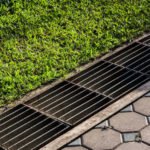Today, comfortable living in the country means not only the availability of water supply and sewerage, but also the ability to connect to the Internet. Unfortunately, there are still places where, due to a weak signal or its absence, it is not easy to get out into the open spaces of the Network. Let’s analyze several ways in which this problem can be solved.
If you are out of range
The easiest way out of the situation is to connect satellite Internet. Such services are offered by specialized companies.
Moreover, this payment includes only network traffic. For a package that includes Internet TV, you have to pay separately. However, the biggest expense item is satellite equipment (antenna, receiver, converter, etc.).
In addition to the high cost, such a connection has another significant drawback — the quality of access strongly depends on weather conditions. In heavy rain or thunderstorms, Internet speed can drop dramatically. And yet, access to the Network via satellite is the only correct solution for those who do not have stable reception due to the great distance from the base station (more than 25 km).

Antenna as an amplifier
If the Internet “does not pull”, and the operator’s tower is not very far away, you can try to amplify the signal using an external antenna. Such a device is available in different types. It can be wave, panel or parabolic type.
Wave
The first option is a “grid”, which is also often called a “herringbone”. The device shows the best result for the 3G standard. When working in 4G, reception will also increase, but the speed will increase slightly.
The “grid” is capable of receiving and transmitting a signal in only one direction. For this reason, such an antenna must be very precisely oriented towards the base station. This will have to be done empirically: climb onto the roof and turn the device left and right until you notice the maximum effect.
However, the antenna alone will not be enough to work on the Internet: neither a computer nor a smartphone can be connected to it directly. Therefore, you will also have to purchase a USB modem or a router for a SIM card.
In one case, you need to connect an amplifier to a modem, insert a SIM card and connect the modem to a computer (or smartphone) via a cable. In another, you can dock the router with the antenna and connect to it using Wi-Fi. This method is undoubtedly more convenient, but you will have to spend money on a router to implement it.
The ability of antennas to amplify a signal is characterized by such an indicator as the gain, which is measured in isotropic decibels (dBi). The larger it is, the higher the Internet speed will be. Wave-type devices usually have a gain in the range of 15-21 dBi. They can be used provided that the BS is located no further than 20 km from the house.
Panel
To work simultaneously with 3G and 4G (or with 4G alone), it is better to purchase a panel-type antenna. Such devices most often support MIMO technology: with its help, the signal is encoded in such a way that the channel bandwidth is expanded. Due to this effect, the speed of sending and receiving data increases. And in order not to mess with additional gadgets, it is advisable to use an amplifier with an already built-in router.
If the operator’s station is closer than 10 km away, a MIMO antenna with 15-20 dBi gain will do. At a distance of 10-15 km, it is better to put a more powerful device — with a gain of 20-24 dBi.
The radiation pattern of panel devices is also wider. This means that there is no need to orient it to the station with an accuracy of up to a millimeter, as it has to be done with wave “Christmas trees”. In order for the antenna to work well, you just need to turn it in the right direction.
Another advantage is the ability to switch between different standards. Such a need often arises. For example, it is more convenient to travel on the Network on 3G, and it will be faster to download files on 4G.
Parabolic
What should I do if the distance from the dacha to the nearest tower is more than 20 km? In this case, neither the wave antenna nor the panel antenna will make a noticeable increase. The optimal solution is a parabolic device with the same MIMO technology. The “plate” is able to amplify the signal almost 10 times, for which many summer residents appreciate it.
A parabola, depending on the configuration, will cost the same as a panel, and the cheapest option is, of course, a “grid”.
In many stores you can see an uncomplicated cheap device. It is called “Internet signal booster” (not to be confused with repeaters!). In fact, this is a room antenna of the simplest design. Practice shows that this “miracle” works very poorly, so we will not even consider it.
What is a repeater?
You have installed an antenna, stretched a cable, hung up a router, but the trouble is: it seems that there is Internet, and the speed is excellent, but for some reason Wi-Fi is not caught in some rooms – and if it is caught, then barely.
Some users, having learned about such a nuisance, begin to fuss: they pull wires, move the router to another floor or acquire a more powerful antenna. You don’t need to do any of this, because there is such a device as a repeater. Someone thinks it’s an amplifier, but in fact it’s more of a repeater, it picks up Wi-Fi from the router and transmits it to distant rooms.
In order for the device to start working, first connect it to an electrical outlet in a room where the signal is already very weak. Then use your computer to perform wireless setup: find the repeater in the list of networks, go to the administrative interface and set the necessary parameters.
You can always learn more about this operation from the manufacturer’s instructions. If something doesn’t work out, try connecting the device to the computer via a cable.
However, there is another way to configure: find the WPS button on the device, press it, and after half a minute press the same button on the router. The devices will dock, after which the repeater will begin to distribute a Wi-Fi signal. This method is much simpler, the only problem is that it can not be used on all models: on some of them the specified button is missing.
When choosing a repeater, give preference to one that is capable of operating in two bands — at a frequency of 2.4 and 5 GHz. In this case, the connection will be faster and more stable.






